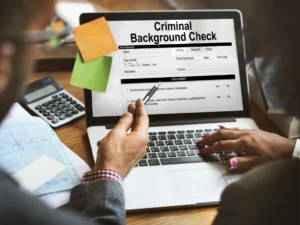15 Strategies for Improved Security at Your Multifamily Property
By Michael A. Silva, CPP, CSC, Author of Protecting Apartments, Condominiums, and Gated Communities: A Guide to Security for Homeowner’s Associations and Property Managers
Crime is an unfortunate fact of life in nearly every multifamily housing community, regardless of where it is located. At some properties, security is the number one concern expressed by residents, making solving crime problems a top priority for property owners and managers.
Here are 15 strategies for providing improved security at your property:
1> Identify Your Security Risks: Use police crime statistics, crime forecast reports, and historical data to properly identify your risk of crime in each category (burglary, car break-in, physical assault, etc.). Once identified, prioritize your risks based on the likelihood that they would occur, and the severity of the consequences were this type of crime to take place.
2> Develop a Written Security Plan: Create a proactive plan for security at your property rather than implementing security measures haphazardly in response to specific problems as they occur. Determine the most cost-effective way to mitigate each type of security risk that you have identified. Address your highest priority risks first, then deal with others as your budget permits.
 3> Take a Balanced Approach to Security: Recognize that an effective security program consists of a proper balance of security procedures, physical security measures, and electronic security systems. Understand that security is a process, not a product. Don’t look for quick fixes or “magic bullets” that may feel good but only marginally increase security.
3> Take a Balanced Approach to Security: Recognize that an effective security program consists of a proper balance of security procedures, physical security measures, and electronic security systems. Understand that security is a process, not a product. Don’t look for quick fixes or “magic bullets” that may feel good but only marginally increase security.
4> Educate Residents About Security: Provide security awareness training to residents to make them part of the solution rather than part of the problem. Use in-person gatherings, newsletters, and social media to continually remind residents of the steps that they can take to keep themselves and the property safer and more secure.
5> Encourage Good Communications: Ask residents to promptly report crimes to the property manager after they have reported them to the police. This allows management to keep track of all incidents occurring on the property and to identify upswings in any particular type of crime. Management should keep residents informed when there is an upward trend in any specific type of crime and use this as an opportunity to remind them of the proper security precautions that should be taken.
6> Harden Your Exterior Doors: Install latch guards or security astragals to make doors more difficult to force open. Install door and frame reinforcement kits to strengthen wood doors. Add security studs to out-swinging doors that have exposed hinges that can be removed.
7> Strengthen Your Windows: Install auxiliary locking devices to supplement the factory-supplied locks on windows. Consider installing security window film or bars on windows that are in vulnerable locations.
8> Prevent “Tailgating”: Reduce the opportunities for intruders to sneak into the building as residents enter or leave. Adjust the time that door openers keep doors open to a minimum. Educate residents to wait for the door to close behind them when entering or leaving and to be aware of unknown people trying to enter the building.
9> Don’t Create Temptations: Keep packages, bicycles, and other desirable assets in locations where they can’t be easily seen from outside of the building. Don’t advertise the locations of the assets most frequently sought after by thieves. Remove signs that identify bike rooms and resident storage rooms by name -use just a room number instead.
10> Be Aware of Common “Hacks” Used by Criminals: There are several methods commonly used by criminals to gain access to multifamily properties. The following are some of these “hacks” and the ways that they can be prevented:
- Most brands of pin tumbler lock cylinders used at multifamily properties can be compromised by “lock picking” or ”lock bumping”. To reduce this risk, consider the use of high-security locks on all exterior doors and on doors to common areas. Examples of high-security locks include ASSA, Mul-T-Lock, and Medeco.
- The proximity access cards and fobs used at most multifamily buildings can be easily duplicated using inexpensive devices available online. To prevent this, upgrade card readers and replace access cards and fobs with a type that cannot be readily duplicated, such as the HID Seos.
- Many popular brands of telephone entry systems come with a standard lock that is the same on all the units that are produced. Many criminals targeting multifamily properties have obtained keys to these standardized locks, giving them access to any property who is using them. To thwart this, the standard locks on telephone entry units should be changed to a high-security lock that is unique to your property.
- Most exterior key boxes with combination locks are notoriously easy to open using techniques shown in instructional videos available online. Avoid using exterior key boxes entirely if possible. If a key box must be used, use a heavy-duty type constructed of thick metal rather than plastic.
11> Properly Maintain Landscaping: Trim trees and shrubs so that they do not obscure visibility or create places to hide. The bottom of tree canopies should be at least 6’ off of the ground, and shrubs should be no taller than 3’ to create an “area of visibility” that allows improper activity to be easily spotted.
12> Provide Good Lighting: Building entrances, walkways, parking lots, and garages should be well-lit to discourage crime and make residents feel safer. A minimum light level of one footcandle (10 Lux) is suggested in all areas of security concern. Lighting should be evenly distributed to avoid having areas that are too bright or too dark.
13> Have Realistic Expectations About Security Cameras: Understand that cameras can be a useful tool, but rarely discourage or prevent crime, despite widely held beliefs otherwise. Even when good video recordings of criminal suspects are captured, resource-strapped police departments may show little interest in identifying and apprehending these suspects for minor property crimes, such as car break-ins or package thefts.
14> Educate Yourself About Security: Take advantage of the numerous resources freely available online to learn more about crime prevention and security.
15> Do Not Be Afraid to Ask for Help: Reach out to locksmiths, fence and gate companies, guard and patrol services, and security systems contractors to gather information about ways that security at your property could be improved. Keep in mind that the advice given by salespeople may be biased toward that vendor’s product or service. To get unbiased opinions, consider hiring an independent security consultant to evaluate your needs and make recommendations.
About the Author

 Michael A. Silva is an independent security consultant that has been practicing since 1985. During the more than 35 years he has been a consultant, Michael has served a wide variety of clients in industries including healthcare, research and development, biotechnology, manufacturing, insurance and financial services, warehousing and distribution, and multifamily housing. Michael is board-certified as a Certified Protection Professional (CPP) by ASIS International and is a member of the International Association of Professional Security Consultants (IAPSC) and holds the Certified Security Consultant (CSC) certification issued by that organization. Michael is currently serving as President of IAPSC and is Principal of Silva Consultants. Michael is author of two books: Becoming an Independent Security Consultant – A Practical Guide to Starting and Running a Successful Security Consulting Practice, and Protecting Apartments, Condominiums, and Gated Communities: A Guide to Security for Homeowner’s Associations and Property Managers.
Michael A. Silva is an independent security consultant that has been practicing since 1985. During the more than 35 years he has been a consultant, Michael has served a wide variety of clients in industries including healthcare, research and development, biotechnology, manufacturing, insurance and financial services, warehousing and distribution, and multifamily housing. Michael is board-certified as a Certified Protection Professional (CPP) by ASIS International and is a member of the International Association of Professional Security Consultants (IAPSC) and holds the Certified Security Consultant (CSC) certification issued by that organization. Michael is currently serving as President of IAPSC and is Principal of Silva Consultants. Michael is author of two books: Becoming an Independent Security Consultant – A Practical Guide to Starting and Running a Successful Security Consulting Practice, and Protecting Apartments, Condominiums, and Gated Communities: A Guide to Security for Homeowner’s Associations and Property Managers.













 Accessibility
Accessibility